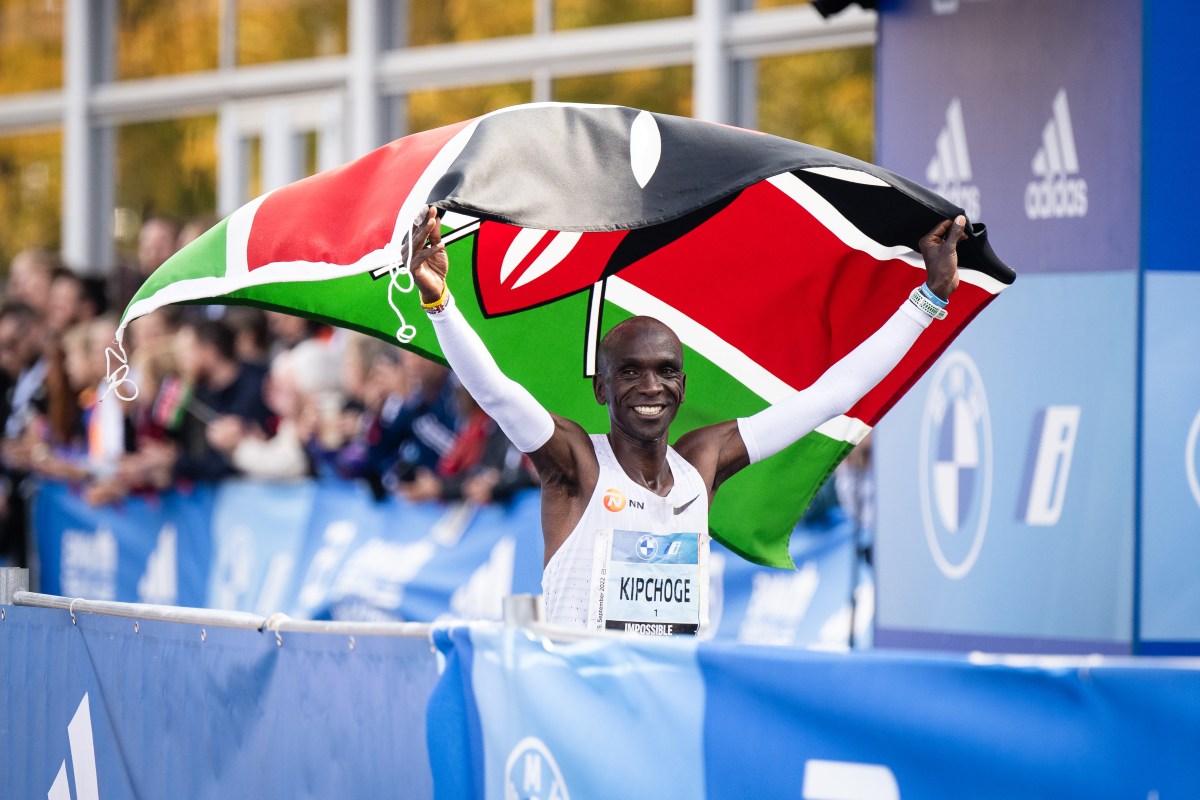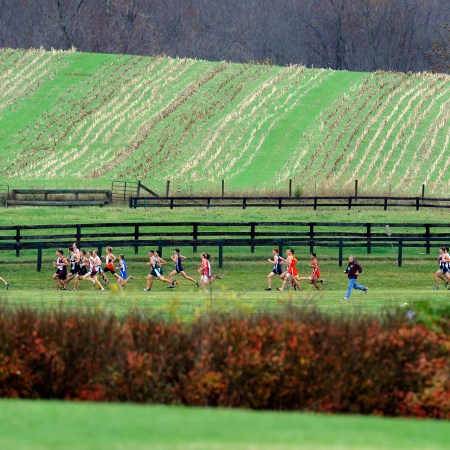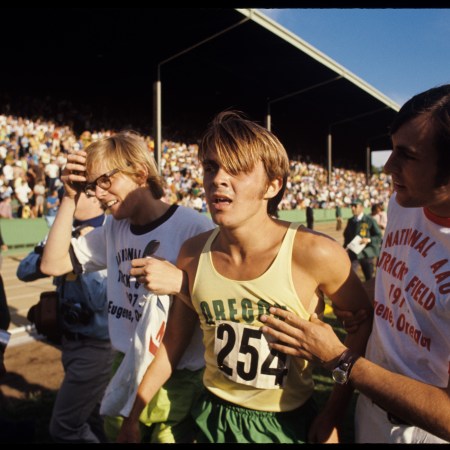Eliud Kipchoge is the most unappreciated athlete alive. I’ve felt theoretically passionate about this for years. Now I’m painfully convinced of it.
It’s remarkable that it’s taken this long, but the Kenyan makes his debut at the Boston Marathon this Monday. It seems inevitable that he will finish first — perhaps even several minutes ahead of his closest competitors — which will leave only New York on his World Major Marathon wish list.
In an unsolicited homage to the greatest distance runner we’ve ever seen, I put on my most carbon-plated sneakers earlier this week and jogged to my local oval to sample the “Kipchoge Challenge.” I’ve been hurting ever since. You may have seen the challenge making the rounds on TikTok or Instagram: it’s an attempt to run the 38-year-old’s pace from last year’s Berlin Marathon (in which he finished in 02:01:09, setting the world record) for as long as possible. Here’s how it works, and an honest appraisal of how I fared.
Kipchoge Challenge Interval Pace
There’s an astonishing catch built into this experiment. It’s assumed that most runners attempting the Kipchoge Challenge can’t run his mile pace for a single mile. Which, yeah, makes sense: the 4:38 split that Kipchoge ran 26 times in a row is an all-out effort for even extremely talented and well-trained non-professional runners. I’m a lifelong runner, and the best mile I’ve ever run was only one second faster.
So in an attempt to somewhat simulate the Kipchoge experience, the running YouTube channel behind the viral challenge (Total Running Productions) proposed that runners try to “match” Kipchoge’s pace at various intervals, all the way up to 1600 meters. Here’s what that looks like:
- 200 meters in 0:34.75
- 400 meters in 1:09.5
- 600 meters in 1:44
- 800 meters in 2:19
- 1,000 meters in 2:53
- 1,200 meters in 3:28
- 1400 meters in 4:02
- 1,600 meters in 4:38
With two-minute breaks interspersed throughout the workout, the idea is to determine how long you can keep Kipchoge’s pace. Can you “make it look easy” (as Kenyan track coaches are wont to say)? Or are you more or less hanging on for dear life?
Meet the People Who Will Never Map Their Runs
Inside the band of “running purists” who take their daily miles sans GPSHow Did I Do?
I gotta say, I was mollified to discover that some big-time runners (like retired Olympian middle-distance specialist Nick Symmonds) have struggled with this workout. Because I didn’t make it very far. Considering I haven’t usually built my speed back until May or June — when the track’s icy, I get kind of lazy with treadmill workouts — I was happy to cruise through 200 meters in 32 seconds and 400 meters in 66. But you don’t get extra points for coming in under Kipchoge’s pace; inherent to his greatness is his restraint. Not used to running that fast, I let my adrenaline get the better of me out of the gate.
It came back to bite me in the 600 meters, which was a barn burner finish. (Had the dozen other people at the track during a lunch hour known what was going on, they would’ve looked up from their dogs and soccer balls to watch.) I made it through the line at precisely 1:44, keeping me alive for another go.
Throughout my active recovery lap, I tried to formulate a gameplan for the upcoming 800-meter attempt. Traditionally, in a track workout, you try to hit marks that keep you in a reasonable effort threshold, where oxygen, lactate and sanity levels are concerned. If you’re running 10 400-meter intervals, say, you won’t really let loose until the last couple.
But the Kipchoge Challenge doesn’t guarantee another interval, so you can’t really think ahead. I decided to go old school: I turned the volume up past my Apple Watch’s approved decibels and went out as hard as possible. I came in at a 67, but despite my best efforts, fell apart on the second lap and logged a 2:20. I’d missed it by literal milliseconds. Game over.
G.O.A.T.
Some part of me was grateful I hadn’t made it in time. Had I attempted the 1,000-meter, I probably would’ve puked that morning’s peanut butter smoothie. But later in the day, athletic amnesia fully in effect, I started daydreaming about the sort of training I would need to do in order to advance a level deeper in the Kipchoge Challenge. The 800-meter seemed easily within reach. But the 1,000? Hmm.
The larger, most important takeaway, though, was a sheer appreciation for the once-in-a-generation, once-in-a-galaxy prowess of the man from the Rift Valley. How does he do it? The running world has some clues; much has been made of Kipchoge’s running economy, his frame, his “fatigue resistant muscles,” his place of origin, his attitude.
But it’s ultimately impossible to pinpoint greatness, and words are wasted trying to. If you want to feel it, go outside and try imitating it, if even for just 100 meters. Whatever torture greets your lungs and limbs, imagine reckoning with it over two long hours. There’s your answer.
Whether you’re looking to get into shape, or just get out of a funk, The Charge has got you covered. Sign up for our new wellness newsletter today.






















